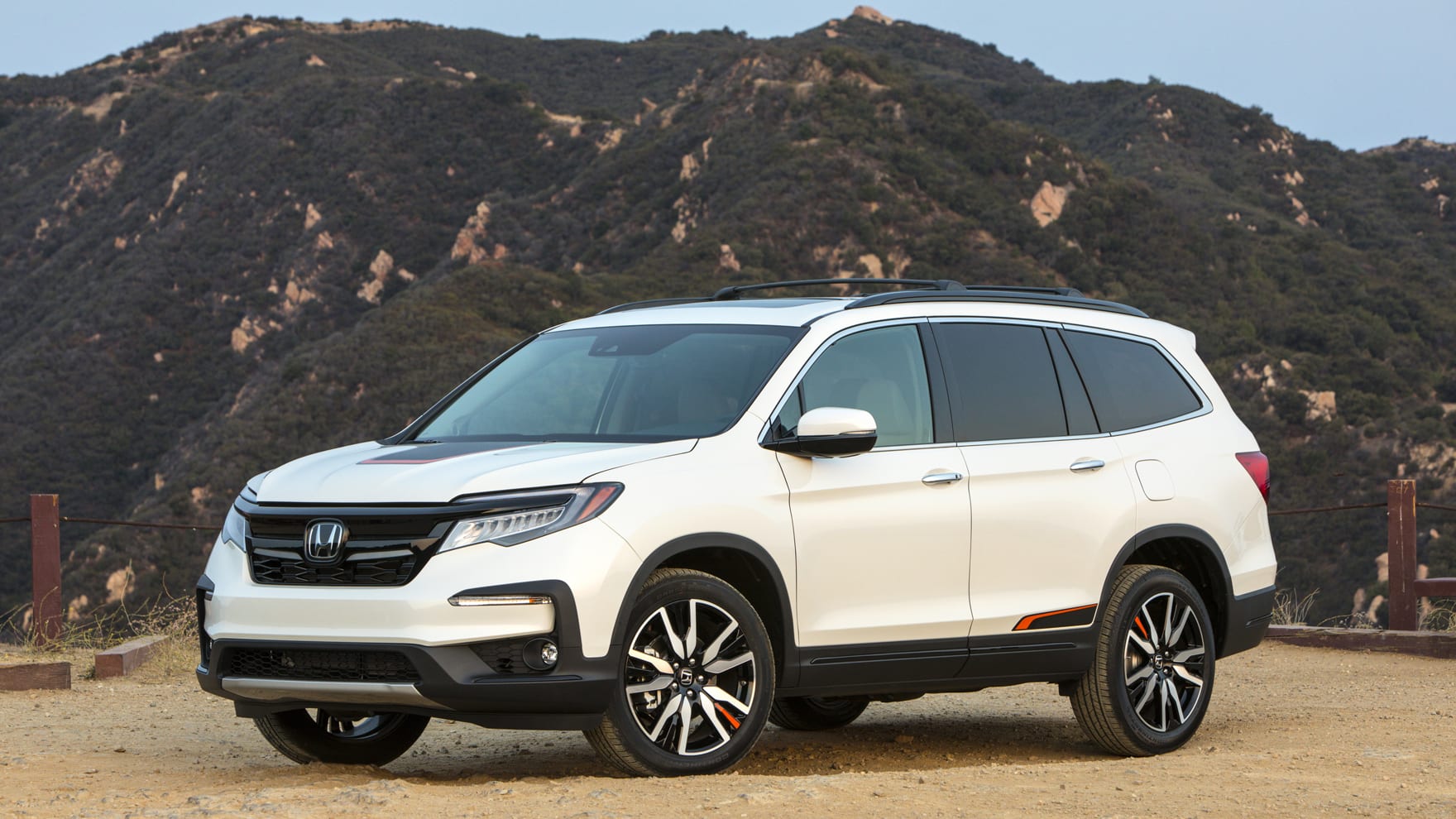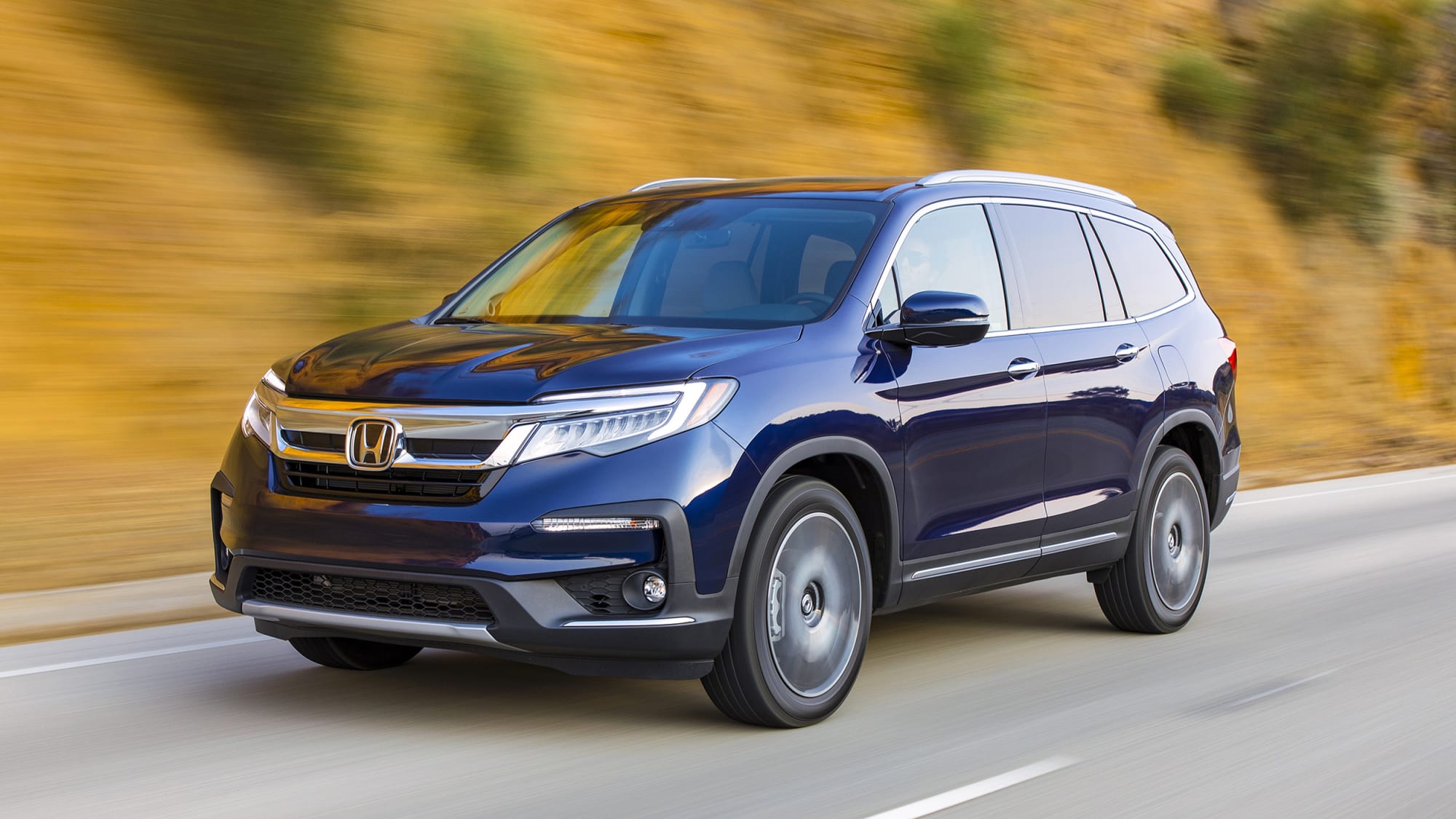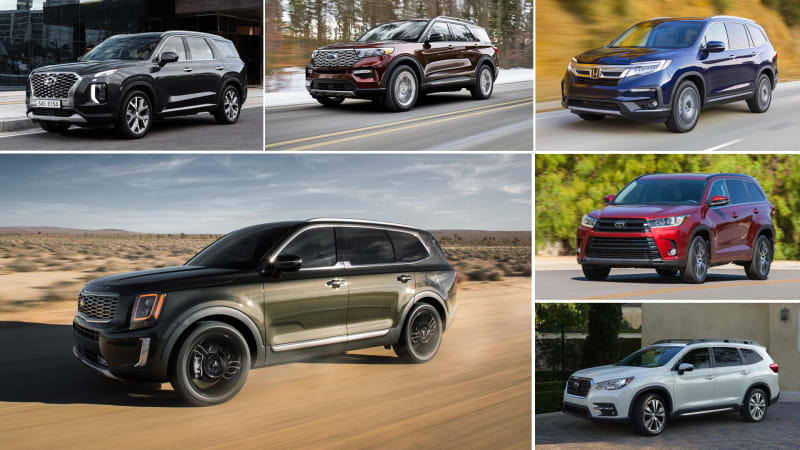2020 Honda Pilot Review and Buying Guide | More capable than cool
https://ift.tt/2T3UoGl
The 2020 Honda Pilot is starting to look a little frumpy. Actually, it always has, but with the introduction of the stylish Kia Telluride and Hyundai Palisade, plus the powerful, rear-wheel-drive Ford Explorer, Honda’s uber-functional family hauler seems even less likely to be the go-to choice of self-styled “cool parents.” Admittedly, the new-for-2020 Pilot Black Edition adds some style inside and out, but as the most expensive version, it’s also a bit of an outlier.
All of that said, no segment apart from minivans is as geared toward family use as three-row crossovers, and when it comes to that task, the 2020 Pilot generally goes a few steps further than most. What it lacks in cool, it makes up for in capability. For one, Honda managed to squeeze more interior space out of a smaller, more manageable exterior size. Full-sized adults and teenagers can actually fit in all three rows, while the cargo area is large, boxy and versatile. There are also abundant storage solutions and kid-friendly features throughout.
The Pilot also comes well-equipped for the money and should hold its value better than most. We also can’t ignore Honda’s sterling reputation for reliability. In other words, opting for the 2020 Pilot would be a pretty sensible choice, if not the coolest one.
What’s new with Pilot for 2020?
There’s a new member of the Pilot family this year as the Black Edition trim level debuts. Similar to the version offered on Honda’s Ridgeline, this new range-topping trim effectively adds special design elements to the loaded Elite trim. As the name would suggest, there’s abundant black trim, including on the grille and 20-inch wheels. Basically, if it’s chrome on other Pilots, it’s black on the Black Edition. The interior is also unique, with oxblood red leather inserts and seat piping (shown below). Otherwise, the 2020 Pilot carries over unchanged apart from a small price hike.



What are the Pilot’s interior and in-car technology like?
Although those oxblood red accents in the Black Edition go a long way to spruce things up, we still wouldn’t call the Pilot’s cabin the most stylish out there. A Mazda CX-9 and Hyundai Palisade can make it look pretty plain. However, it’s also one of the most well-made and functional cabins in the segment, largely intended with the goal of making parents’ lives easier.
There are bins everywhere up front, including a giant center bin that’s big enough to hide a purse or other valuables. Better still, its flat rolling cover provides extra storage since it doesn’t need to serve double duty as an armrest (there are minivan-style rests attached to each front seat). There are also multiple tiers of bins on the doors and in the center stack.
Technology isn’t as well executed. Yes, there are plenty of included features on everything save the more basic LX, but the touchscreen that controls them can frustrate. Last year’s addition of a new UI with quicker responses and a volume knob was welcome, but many other flaws remain: insufficient menu buttons, no tuning knob and/or direct tune function, and an excessive process for going between Honda and Apple/Android interfaces are just some of the annoyances. Many of these issues were corrected for the vastly improved system in the Accord and Odyssey, but the Pilot sticks with an imperfect old/new hybrid. If there’s a reason to ponder something other than the Pilot, this would certainly be it.




How big is the Pilot?
Honda did an exceptional job of getting the most interior space out of the Pilot as possible. While its exterior dimensions are some of the smallest in the segment, its interior is among the roomiest and most functional. Second-row space is typically generous, while the third row has enough leg- and headroom for full-size adults and teenagers to fit quite comfortably. It’s also pretty boxy back there, so you shouldn’t feel too claustrophobic in the way-back. The new Kia Telluride and Hyundai Palisade are a bit more spacious, but not by much.
The same could be said about the cargo area, which also gives away a few cubes to the otherwise similar Subaru Ascent. This is particularly noticeable behind the raised third row. You may be able to fit an extra bag back there in one of its rivals, but in general, the Pilot holds a ton of stuff without feeling especially huge and unwieldy behind the wheel.
Keep in mind that if you don’t need that much space, the Honda Passport is essentially a two-row, five-passenger Pilot.

What’s the Pilot’s performance and fuel economy?
The 2020 Honda Pilot comes standard with a 3.5-liter V6 good for 280 horsepower and 262 pound-feet of torque. Front-wheel drive is also standard on all trims but the Elite and Black Edition, which come standard with the advanced torque-vectoring i-VTM4 all-wheel-drive system that’s optional on all other trims.
Although there’s only one engine available, the transmission differs by trim. The LX, EX and EX-L get a six-speed automatic, whereas the others have a nine-speed automatic, which we’ve found to actually be less refined than the six-speed. Its fuel economy is awfully similar, too. With front-wheel drive, the six-speed trims return 19 mpg city, 27 mpg highway and 22 mpg combined. That goes up to 20/27/23 with the nine-speed. All-wheel drive doesn’t result in much of a change, with estimates of 18/26/21 with the six-speed and 19/26/22 with the nine-speed.
What’s the Pilot like to drive?
The Pilot provides a comfortable and composed ride, the handling and steering are confidence inspiring, and the smooth engine has more than enough power. Its advanced torque-vectoring all-wheel-drive system even improves road holding in addition to poor weather traction. It basically clears the bar for the segment, and apart from some unusual behavior from the available nine-speed automatic, is pretty much vice free.
That said, the Pilot is also pretty unmemorable behind the wheel. It’s almost more like a minivan in SUV clothing. Though it’s a bit more involving than a Subaru Ascent, it also isn’t the best choice for those hoping to maintain some driver engagement from their large family vehicle. The Mazda CX-9 would be a much better choice for that, as would the new Ford Explorer. We wouldn’t say that driving the new Kia Telluride is particularly memorable either, but there’s something about it (perhaps it’s just the styling) that manages to avoid the minivan vibe.
What more can I read about the Honda Pilot?
Our editors evaluate the revised Pilot, including its ride and handling, revised technology and nine-speed automatic, and controversial black and orange graphics Honda made available for 2019.
We get our first drive of the revised 2019 Honda Pilot. We tell you what’s new and updated, why Honda changed what they did, and how successful they are. We also provide more detail about the i-VTM4 all-wheel-drive system and the Pilot’s off-road capability.
We compare dimensions and engine specs of the new 2020 Telluride to the Pilot and other competitors, including the 2020 Ford Explorer, 2020 Hyundai Palisade, Toyota Highlander and Subaru Ascent.
What features are available and what’s the Pilot’s price?
The 2020 Honda Pilot is available in LX, EX, EX-L, Touring, Elite and Black Edition trim levels. Three rows of seats are standard, with the first four trims coming standard with a second-row bench and therefore an eight-passenger capacity. Second-row captain’s chairs that reduce capacity to seven are optional on the Touring and standard on the Elite and Black Edition.
Pricing starts at $32,645 for the LX trim level, including the $1,095 destination charge. All-wheel drive is always a $2,000 option. Standard equipment includes 18-inch alloy wheels, adaptive cruise control, the Honda Sensing suite of accident avoidance tech (described in Safety section below), cloth upholstery, a manually adjustable driver seat, two USB ports, a seven-speaker sound system and a traditional audio face plate with buttons, knobs and a color display.
Given the abundance of added content included with the EX for $35,525, many consumers usually use it as their starting point for the Pilot. It includes automatic headlights, proximity entry and push-button start, blind-spot warning, three-zone automatic climate control, an eight-way power driver seat, heated front seats, an 8-inch touchscreen, Apple CarPlay, Android Auto, and HD and satellite radios. If equipped with AWD, multiple off-road traction settings are included (Snow, Sand and Mud).
From there, we provide a breakdown of features, specs and local pricing for the other trims here on Autoblog. Prices for each trim are below. All are for front-drive model, except the Elite and Black Edition, which come standard with all-wheel drive.
LX: $32,645
EX: $35,525
EX-L: $38,955
Touring: $43,715
Elite: $49,215
Black Edition: $50,715
What are the Pilot’s safety equipment and crash ratings?
The “Honda Sensing” suite of safety features is standard on all trim levels. Included features are forward collision warning, automatic emergency braking, and lane-departure warning and keeping. Blind-spot warning is included on all but the base trim. Unfortunately, these aren’t the best-executed accident avoidance tech features on the market. The lane-keeping assist and road departure mitigation are far too sensitive or prone to false alarms with loud warnings of BRAKE! in the instrument panel accompanied by beeping. This can occur when not crossing either lane line. The adaptive cruise control system is also one of the least sophisticated and potentially annoying examples on the market.
In government crash tests, the Pilot received a five-star overall rating. It got four stars for frontal crash protection, five stars for side protection and four stars for rollover protection. The Insurance Institute for Highway Safety named the 2019 Pilot a Top Safety Pick. It got the best possible rating of “Good” in all crash tests but the new small overlap front/passenger test, where it got an “Acceptable” rating. It also got headlight ratings of “Good” or “Acceptable” depending on trim, while the forward collision mitigation system received the best-possible rating of “Superior” for its effectiveness in preventing or mitigating a crash.
Auto Blog
via Autoblog https://ift.tt/1afPJWx
July 31, 2019 at 11:03AM



